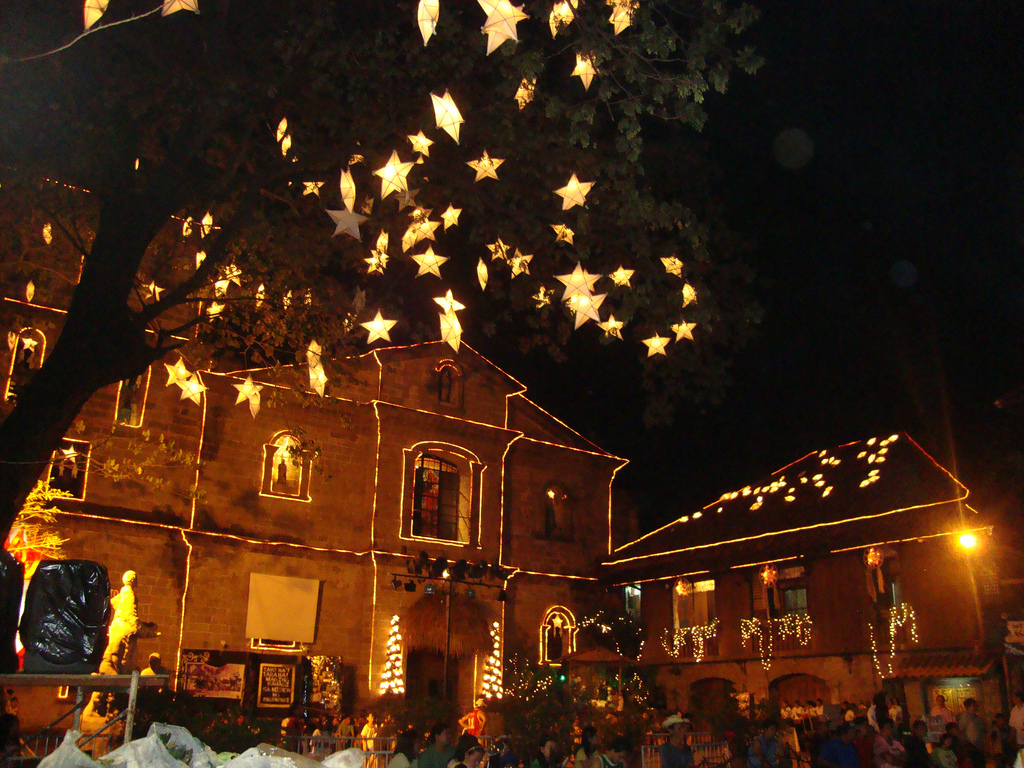The Philippines is a country rich in cultural heritage and traditions. From colorful festivals to unique customs, the Filipino people have a deep-rooted connection to their cultural practices. In this listicle, we will explore 9 unique Filipino traditions and customs that offer a glimpse into the country’s vibrant cultural tapestry.
Simbang Gabi (Night Mass)

Simbang Gabi is a cherished Christmas tradition in the Philippines. It involves attending a series of nine early morning masses leading up to Christmas Day. This custom highlights the Filipino’s strong devotion to their Catholic faith and marks the beginning of the holiday season.
Bayanihan (Community Spirit)

Bayanihan represents the strong sense of community in the Philippines. It involves neighbors coming together to help relocate a house by carrying it on bamboo poles. This tradition exemplifies the Filipino value of unity and cooperation in times of need.
Pahiyas Festival

The Pahiyas Festival, held in Lucban, Quezon, is a colorful celebration of gratitude for a bountiful harvest. Houses are adorned with rice, fruits, vegetables, and colorful decorations made from rice paper and kiping (decorative rice wafers). The festival showcases the Filipinos’ creativity and gratitude for nature’s blessings.
Kamayan

Kamayan is a traditional Filipino way of eating without utensils. Instead, food is served on banana leaves, and participants use their hands to enjoy the meal. This custom fosters a sense of togetherness and creates a fun and interactive dining experience.
Balikbayan Box

The Balikbayan Box is a package filled with gifts and necessities sent by overseas Filipinos to their families back home. It is a gesture of love, care, and connection, often sent during special occasions or holidays. This tradition strengthens family ties and serves as a way to share blessings with loved ones.
Santacruzan

Santacruzan is a religious procession held in May to honor the search of St. Helena for the Holy Cross. Young women, dressed in beautiful gowns, represent biblical characters and historical figures. This pageant-like tradition combines religious devotion with the celebration of beauty and femininity.
Mano Po

“Mano po” is a gesture of respect where younger individuals take the hand of an elder family member and bring it to their forehead as a sign of reverence. This custom showcases the Filipinos’ deep respect for their elders and their desire to seek blessings and guidance.
Tinikling

Tinikling is a traditional Filipino folk dance that involves dancers skillfully maneuvering between bamboo poles. The dance represents the agility and grace of the Filipinos, and it is a beloved cultural expression performed during festivals and celebrations.
Parol

The Parol is a Filipino Christmas lantern made of bamboo and colorful paper or capiz shells. It symbolizes the Star of Bethlehem and represents the Filipino people’s hope and faith during the holiday season. Parols can be seen adorning houses, streets, and establishments throughout the country.
These 9 unique Filipino traditions and customs highlight the cultural richness and values deeply ingrained in Filipino society. From religious practices to community spirit and expressions of gratitude, these customs offer a glimpse into the heart and soul of the Filipino people. Embracing and preserving these traditions contributes to the country’s cultural identity and fosters a sense of unity and pride among Filipinos, both at home and abroad. These traditions not only connect generations but also serve as a reminder of the country’s history, resilience, and vibrant heritage.

